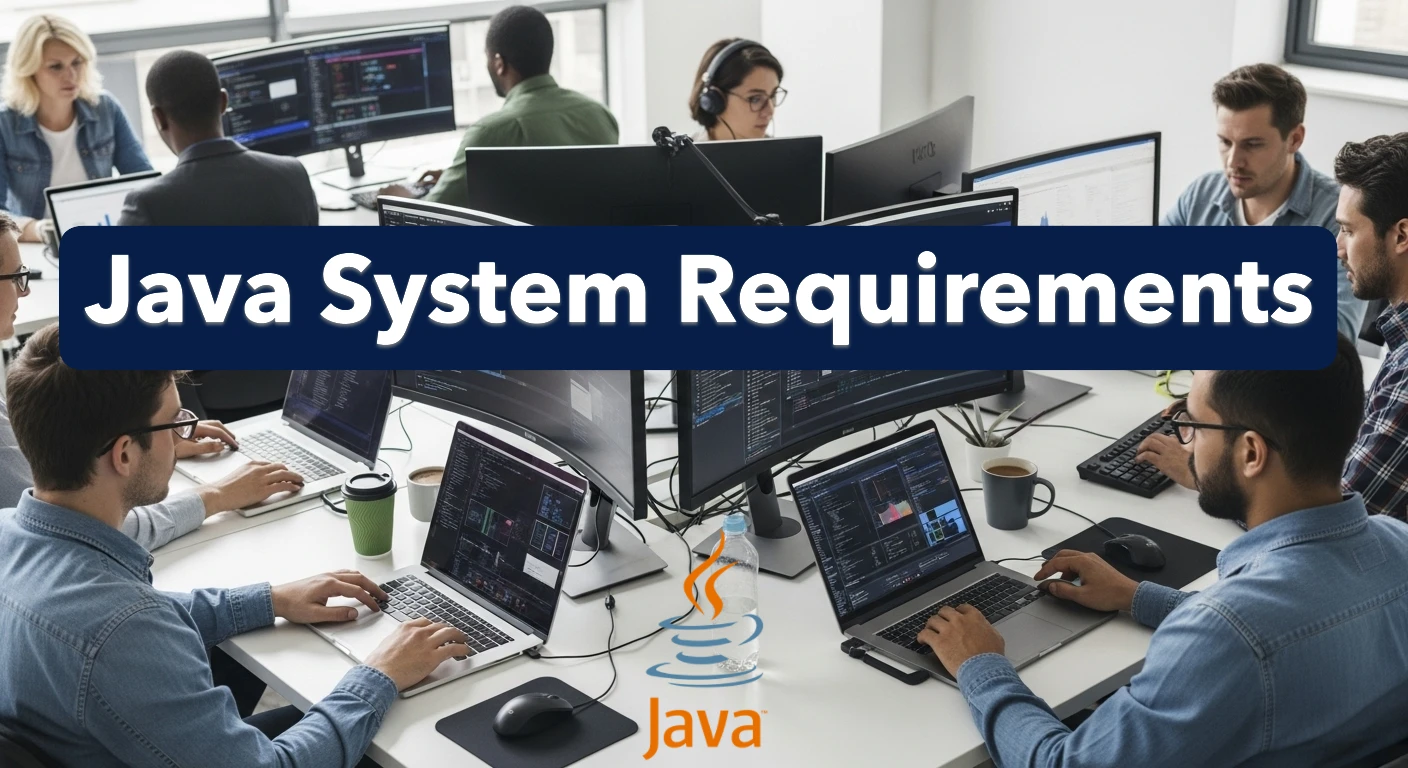If you’ve ever tried to run a Java application and got lost in all those “system requirement” lists, don’t worry — you’re not alone. Java is one of the most widely used programming platforms in the world, but figuring out what your computer actually needs to run it can be confusing.
In this article, we’ll break down Java system requirements in simple terms. Whether you’re installing Java to run everyday applications or developing Java programs yourself, here’s everything you need to know — no tech jargon, no fluff.
Also Read: Best Laptops for Java Programming
🧩 What Is Java, and Why Do System Requirements Matter?
Java is a cross-platform programming language, which means it can run on almost any device — Windows, macOS, or Linux. But for Java to work properly, your system has to meet certain basic requirements. These ensure that Java apps launch quickly, run smoothly, and stay secure with the latest updates.
If your machine is outdated or underpowered, you might experience slow startups or even app crashes. So it’s worth taking a minute to check if your setup is ready for Java in 2025.
💻 Minimum and Recommended System Requirements for Java
Here’s a quick breakdown of what you actually need to install and run Java in 2025.
| Category | Minimum Requirements | Recommended for Best Performance |
|---|---|---|
| Operating System | Windows 10 or newer, macOS 10.7.3+, or modern Linux distro | Windows 11, macOS 12 (Monterey) or later, or latest Ubuntu/Fedora |
| Processor (CPU) | 1 GHz 64-bit processor | 2+ GHz dual-core or better |
| Memory (RAM) | 2 GB | 8 GB or more |
| Disk Space | 300 MB free space | 1 GB free space |
| Browser Compatibility | 32-bit or 64-bit browsers supported | Use the same version as your Java (64-bit preferred) |
| Administrator Rights | Required for installation | Required for installation |
These are general guidelines. In reality, Java itself doesn’t need much power — but modern applications written in Java do. So, while the minimum specs might be fine for small utilities, you’ll want better hardware for development or running large-scale apps.
🪟 Java on Windows
For Windows users, Java works best on Windows 10 or Windows 11 (64-bit). If you use a 64-bit browser, make sure to download the 64-bit version of Java as well — mixing 32-bit and 64-bit versions can cause installation issues.
💡 Tip: Always install Java as an administrator to avoid permission problems and update errors.
🍏 Java on macOS
On macOS, Java runs on both Intel and Apple Silicon (M1, M2, M3) processors. For the smoothest experience, update your Mac to at least macOS 12 Monterey or newer.
Most developers prefer using the JDK (Java Development Kit) rather than the JRE (Java Runtime Environment), since it includes all the tools needed for coding, debugging, and running Java projects.
🐧 Java on Linux
If you’re a Linux user, you already know how flexible things can get. Java supports a wide range of distributions, including Ubuntu, Debian, Fedora, and openSUSE.
Just make sure you’re running a 64-bit version of your OS, and install Java through your package manager or directly from Oracle’s tar.gz files for manual setup.
🔧 JRE vs JDK: Which One Do You Need?
This is a common question — and the answer depends on what you plan to do.
| Purpose | Choose This Version |
|---|---|
| Running Java applications (e.g. Minecraft, apps, tools) | JRE (Java Runtime Environment) |
| Developing Java software, using IDEs like IntelliJ or Eclipse | JDK (Java Development Kit) |
The JDK includes the JRE, plus all the developer tools — compiler, debugger, libraries, and more. So, if you’re into programming or learning Java, go for the JDK.
🚀 Pro Tips for Better Java Performance
Even if you meet the minimum requirements, here are a few easy tweaks to make Java run faster and smoother:
- ✅ Use the latest version of Java — it’s faster and more secure.
- 🔒 Keep your system updated — outdated OS components can slow down Java apps.
- ⚙️ Adjust your memory allocation if you’re using Java-heavy software (especially servers or IDEs).
- 🧹 Uninstall old Java versions — multiple installations can cause conflicts.
🏁 Final Thoughts
Java may be old-school, but it’s still powering millions of applications worldwide — from Android tools to big enterprise systems. Setting it up is easy once you understand what your system really needs.
In short:
- Use a 64-bit operating system
- Have at least 4–8 GB of RAM
- Keep Java updated to the latest version
- Install it with admin rights for stability
Do that, and you’ll be running Java apps and projects without a hitch in 2025 and beyond.
📚 Frequently Asked Questions (FAQ)
Java doesn’t need a high-end machine. Any modern 64-bit operating system — like Windows 10 or 11, macOS 12 or newer, or a recent Linux distribution — will run it just fine. You’ll only need around 300 MB of free disk space and a basic dual-core processor.
Technically, Java can run on as little as 2 GB of RAM, but that’s only for small programs. If you plan to use it for development or heavier applications, 8 GB or more will give you a smoother experience.
Java 11 supports 64-bit versions of Windows, macOS, and Linux. It needs at least a 1 GHz processor, 2 GB of memory, and about 500 MB of free space. Still, newer machines handle it much better, especially when running large Java applications.
All you really need is the Java Runtime Environment (JRE) installed on your computer. If you’re developing software, you’ll need the Java Development Kit (JDK) instead. Either way, make sure you have the latest version and the proper permissions to install it.










